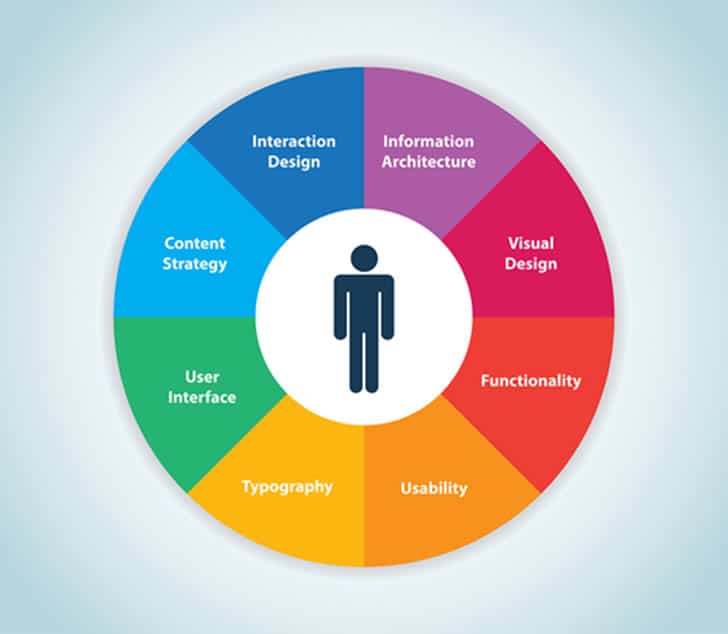
User Experience – dubbed UX for short – is a hot topic. In the broadest sense, it can be defined as the overall experience you have when you are using or interacting with something – and that ‘something’ could literally be almost anything in the world! For many people, user experience comes to mind in the context of ‘technical’ devices like smart phones, computers, software, and websites. But all of us have dozens, even hundreds of daily ‘user experiences’ when we drive our car, stop at a red light, go through the checkout line at the grocery store, cook a meal in the microwave… the list goes on and on.
User Experience: The Good, the Bad, and the Ugly
Think of a recent interaction you have had that would qualify as a ‘great user experience’. This could be in the form of outstanding customer service, a product that was incredibly easy to use, or a website that gave you the exact information you needed, in just the right format, at just the right time. How wonderful that must have been!
User experience definitely gets more of our attention – when it is bad than when it is good. A great user interface is so seamless that we don’t even think about it – we just use it, get what we need, and move on. But a poor user experience tends to make us frustrated, impatient, even angry – and we inherently remember that negative experience for a longer time. Think about the last time you had to wait too long at a restaurant because they messed up your order. Or the last time you called the toll-free customer service number for some big company and tried to navigate the automated system of menus to get the information you needed or (gasp) maybe even talk to a real live person. Enough said.
User Experience in the IT Industry
In the IT industry, software developers and web designers will sometimes talk about user experience using these related terms:
- User-Centered Design
- User Interface (UI) or Graphical User Interface (GUI)
- Usability
- Human Factors & Ergonomics
- Human-Computer Interaction
It is erroneous to think that user experience is just one of the above list items. In fact, the ISO definition for user experience states that user experience is “concerned with all aspects of the user’s experience when interacting with the product, service, environment or facility”. Therefore, user experience incorporates all of the above. This also means that user experience is not the same thing as usability.

No matter what you happen to call it, one thing is clear: user experience is more important in our industry than ever before. More and more products and services are moving towards automated and software-based solutions – in many cases taking the “live human” completely out of the service equation. The best IT service providers will be the ones who take explicit steps to ensure that the software solutions they build are adequately anticipating and addressing the needs, desires, habits, expectations, and thought processes of their end users. This would also require you to shift your business structure to provide a better user experience.
Why Should We Care About User Experience?
If you’re running a business, someone’s overall experience with your product or service could very well make the difference between whether they will buy, or more importantly, whether they will come back to buy again or look elsewhere next time.
If your business includes or depends on a website – and most businesses must at least have a web presence to stay competitive – then the user experience for your website will play a critical role in attracting and maintaining your customer base. And for most potential customers, you only get one chance to ‘get it right’. Most visitors decide within a matter of seconds whether to stay on your site or hit the ‘back’ button to look for something better. So the stakes are incredibly high.
So we know that user experience is important. Why, then, is it so difficult for many of us to define and create a successful user experience for our end users?
“That’s gonna be a LOT of work…”
Well, the short answer is because it takes a lot of work to design something – anything – that works well, for a large base of potential users, who may or may not think like we do, no matter what the circumstances. Anyone who develops software or web-based services knows that it takes a huge amount of planning, design, production, and testing to develop an end product that achieves the desired function. But to actually design and create something that not only works, but works well and in a way that actually makes sense to your end users, follows their thought processes, anticipates every need they might ever have at exactly the right time, and helps them get the job done in the most efficient way no matter what? That’s something altogether and entirely different.
The Power of Empathy
It is a monumental task, one that requires, more than anything else, that we develop a keen sense of empathy for our end users. It requires stepping out of our own shoes; putting our own thoughts, priorities, and goals on the back burner for a moment; and really trying to get inside the minds of our users. Which just is not comfortable, convenient, or easy for some of us. The moral of this story? It may not take a ‘village’ to build great software, but it most certainly does take a well-rounded team. Just make sure that whoever is working on your software or building your website has somebody on the team who is thinking about how things will function from the user’s perspective. You need a user experience champion and in this thought process you should also consider hiring a user experience manager.
Find the “Easy” Button!
The best road to user experience success is to completely transform yourself into the user/ inquirer/ Googler/ purchaser/ person. Involve your users and gather their requirements.
It is then that you will hear a voice in your head that says … ‘As an end user, I’m here because I need something, and I either want to get it from you or find out if you can provide it. In some cases I really may not even know what I need, so it would be great if you could help me figure that out, too. I just want to get what I need from you and move on with the rest of my day. So if you could please, please read my mind, anticipate my needs, and (above all else) just make it EASY for me to get what I’m looking for, without making me jump through hoops or wade through “junk” I don’t care about, I will be your loyal follower for life. Or at least, until someone who does all these things better than you do comes along…’
Want to learn more?
Want to get an industry-recognized Course Certificate in UX Design, Design Thinking, UI Design, or another related design topic? Online UX courses from the Interaction Design Foundation can provide you with industry-relevant skills to advance your UX career. For example, Design Thinking, Become a UX Designer from Scratch, Conducting Usability Testing or User Research – Methods and Best Practices are some of the most popular courses. Good luck on your learning journey!
(Lead image: Depositphotos)
